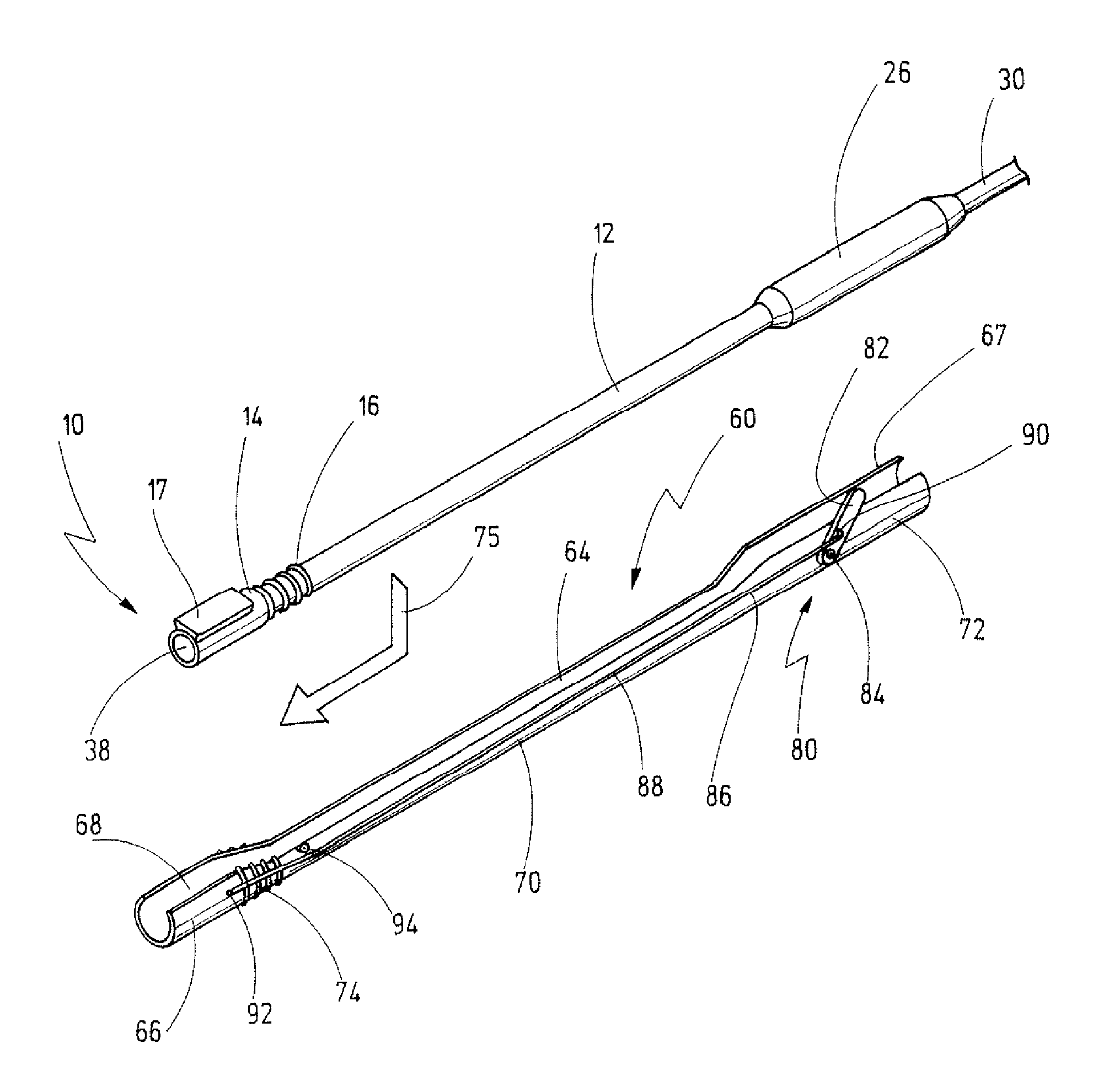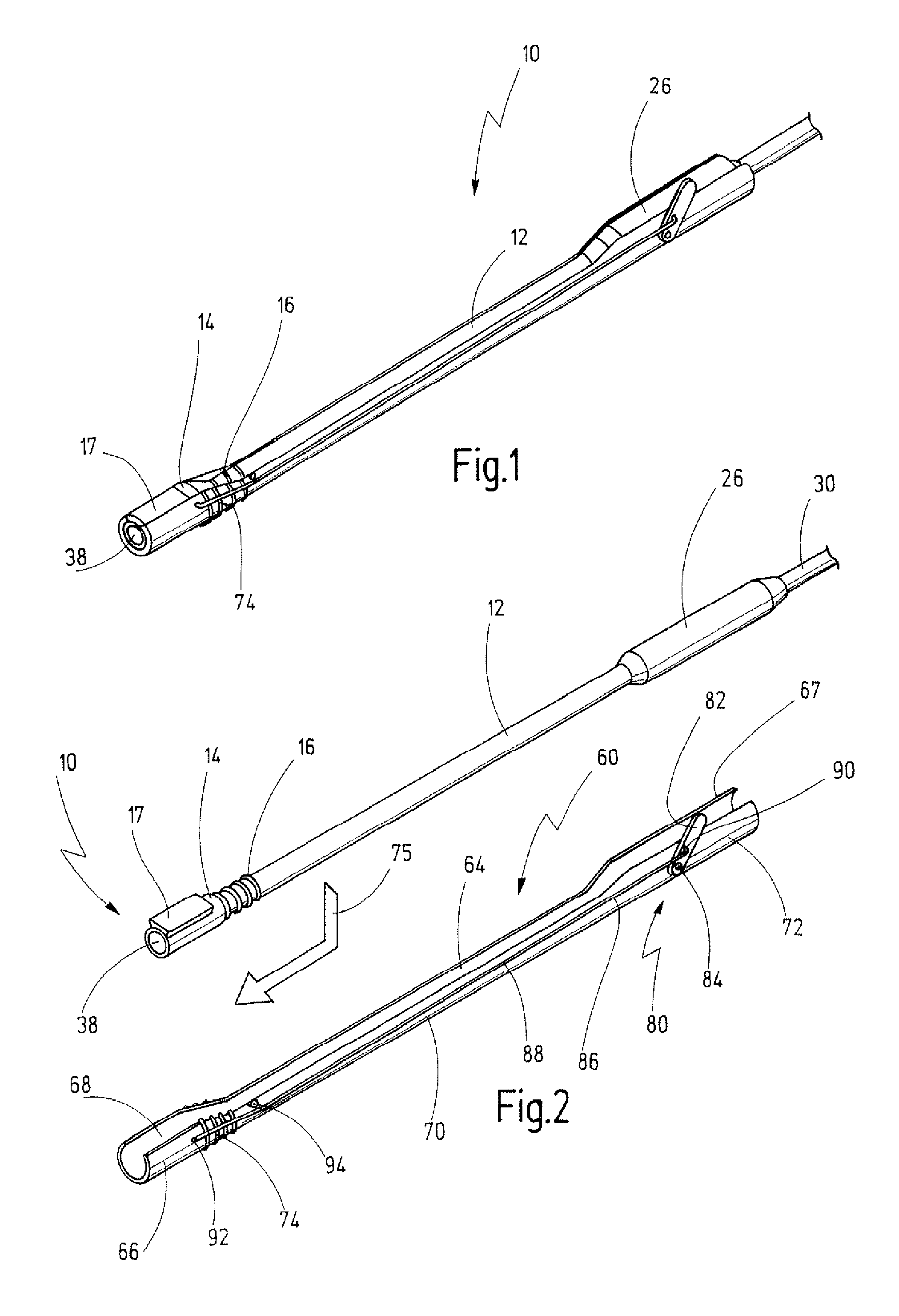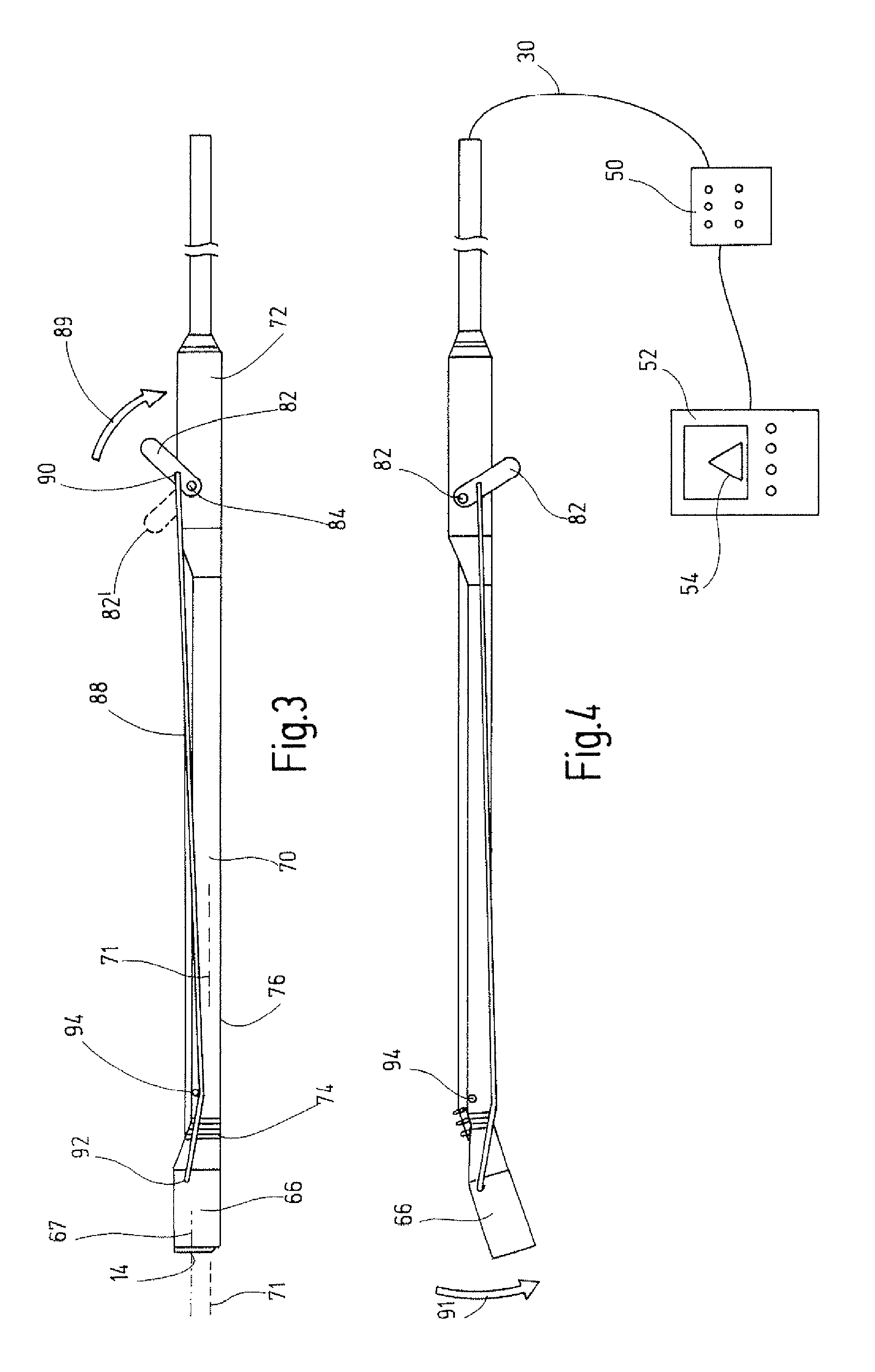Deflectable autoclavable endoscope
an endoscope and autoclavable technology, applied in the field of endoscopes, can solve the problems of inability to achieve with great certainty, endoscopes exposed to considerable stress, contamination, etc., and achieve the effect of reliable function and additional mechanical protection
- Summary
- Abstract
- Description
- Claims
- Application Information
AI Technical Summary
Benefits of technology
Problems solved by technology
Method used
Image
Examples
Embodiment Construction
[0087]An endoscope shown in the figures is designated overall by the reference number 10.
[0088]The endoscope 10 has an elongate, rectilinear stiff shaft 12, which has a distal end portion 14.
[0089]The transition from the shaft 12 to the distal end portion 14 comprises a flexible area 16. This is obtained by a relative thinning of the material of the shaft wall in this area. In this area, a resetting element 18 in the form of a helical spring 20 is placed around the shaft 12. Formed on the outside of the distal end portion 14 there is an attachment 17 which, as can be seen in particular from FIG. 6, has an approximately dovetail-shaped contour.
[0090]As will be seen in particular from the view in FIG. 5, the external diameter 22 of the shaft 12 is smaller than tire external diameter 24 of the distal end portion 14.
[0091]As will also be seen from FIG. 5, the shaft 12 has a proximal portion 26 whose external diameter 28 is likewise greater than the external diameter 22 of the shaft and ...
PUM
 Login to View More
Login to View More Abstract
Description
Claims
Application Information
 Login to View More
Login to View More - R&D
- Intellectual Property
- Life Sciences
- Materials
- Tech Scout
- Unparalleled Data Quality
- Higher Quality Content
- 60% Fewer Hallucinations
Browse by: Latest US Patents, China's latest patents, Technical Efficacy Thesaurus, Application Domain, Technology Topic, Popular Technical Reports.
© 2025 PatSnap. All rights reserved.Legal|Privacy policy|Modern Slavery Act Transparency Statement|Sitemap|About US| Contact US: help@patsnap.com



